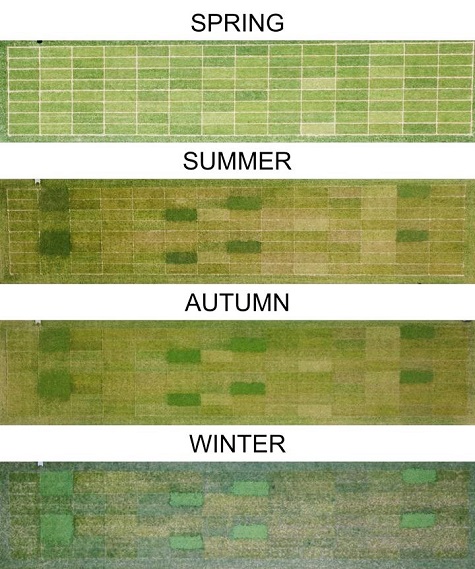
Seed producer DLF, have said that amongst the current brown and baron land, green patches of clover remain.
The company says clover generates its own nitrogen from the atmosphere making it one of the most tolerant varieties to drought and other high stress environments.

The effect of clover throughout the year during trials conducted by DLF in France
Alongside more frequent periods of sustained hot and dry weather, DLF say the rise in fertiliser prices is driving seed producers to look for varieties that can be maintained with a more sustainable nitrogen programme. The unique root nodules on clover are formed by the Rhizobium bacteria, capable of converting atmospheric nitrogen into a natural fertiliser available for the clover as well as the companion grasses. Sourced in this way, the supply will also be gradual and ongoing, contributing to more sustained growth when compared to the ‘flush’ that can occur when larger quantities of nitrogen are applied as part of a managed feeding programme.
Microclover, DLF say, is a special bred dwarf white clover which joins in well with other turf species. The smaller leaves and lower growth habit contribute to a dense, uniform appearance as well as delivering strong wear qualities and heat/drought tolerance.
According to the producer, all of this means that the inclusion of Microclover can result in a sward that suffers from less weed and disease invasion, and one that requires less water, fertiliser and ultimately cost, to sustain. In trials conducted by the STRI, DLF say Microclover is proven to deliver enhanced coverage and improved colour when compared to pure grass swards.
The producer says that Masterline’s PM82 Microclover Sport mixture has been specifically blended with these benefits in mind.